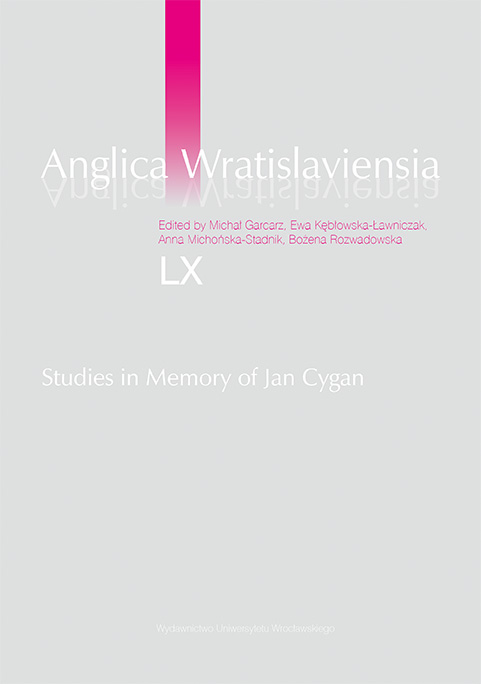A Game of Equivocations: Richard Shusterman’s “The Man in Gold: Paths between Art and Life. A Philosophical Tale”
A Game of Equivocations: Richard Shusterman’s “The Man in Gold: Paths between Art and Life. A Philosophical Tale”
Author(s): Anna BudziakSubject(s): Review, General Reference Works
Published by: Wydawnictwo Uniwersytetu Wrocławskiego
Keywords: Richard Shusterman; doppelgänger; T. S. Eliot; Oscar Wilde; somaesthetics; photo-essay; autobiography; irony
Summary/Abstract: In Richard Shusterman’s The Adventures of the Man in Gold, the limitations of the conte philosophique are transgressed. The published volume incorporates a photo essay, reviving the old tradition of paragone; the written narrative, in turn, invokes the traditions of the doppelgänger story, the fairy tale, the quest-romance and—through its introspective passages—a literary confession. But even if, by Shusterman’s admission, this tale refers to its author’s personal experience, it also breaks the “autobiographical pact” by continuously playing with the pronominal references and thus destabilizing the relationships between the author, the narrator, and the characters. The current review proposes that Shusterman’s refusal to draw the line separating “I” from “he”—and reality from fantasy—is informed by his conclusions about T. S. Eliot’s (self-protective) and Oscar Wilde’s (self-incriminating) creations of their public personae. It also suggests that his storytelling technique relies on the trope of irony in self-redescription as understood by Richard Rorty, although Shusterman’s l’Homme en Or remains the very opposite of Rorty’s ironist.
Journal: Anglica Wratislaviensia
- Issue Year: 60/2022
- Issue No: 1
- Page Range: 285-293
- Page Count: 9
- Language: English

